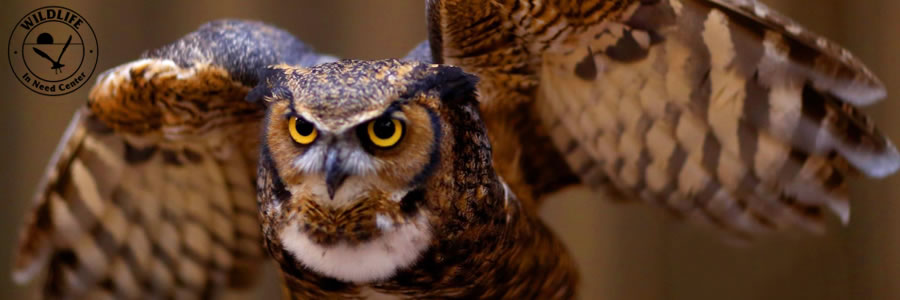What We Do
What We Do
Wildlife rehabilitation is the treatment and care of injured, diseased, or orphaned indigenous wildlife, and the subsequent return of healthy viable animals to appropriate habitats in the wild. At the Wildlife In Need Center we answer over 10,000 phone calls from people asking for advice or help with wildlife issues and admit over 3,000 animals annually. We also conduct educational programs in schools, for scout groups, and for church and civic groups.
The Center is run primarily by volunteers and a very small staff, operating 365 days a year. We receive no funding from county, state, or federal governments. We run extensively on private contributions, primarily from individual donors, but also from corporate foundations and private foundation grants.
Rehabilitate
Wildlife in Need accepts all species of Wisconsin wildlife, annually treating up to 3,000 animals of over 130 species. Nearly 35,000 injured, sick or orphaned animals have passed through the Wildlife in Need Center’s doors since January 1, 1994. 85% of these animals were admitted because of interactions with humans.
Educate
Our staff and volunteers currently provide over 100 programs for classrooms, youth groups, civic, and community organizations annually. Utilizing our educational ambassador animals and hands-on activities as well as video and PowerPoint technology we educate over 8,000 people a year representing a wide variety of audiences about the importance of respecting our wild neighbors and what we can do to help them. Our facility is staffed and available to help every day, including weekends and most holidays. When we aren’t available we have a helpful website and regularly answer questions regarding our wild neighbors through our blog. Additionally, our volunteers and staff answer thousands of wildlife questions over the telephone annually.
Participate
The Wildlife in Need Center works with volunteer, civic and business partners regularly. Scout groups complete projects to earn merits that also benefit the Center; local businesses invite our ambassadors out to celebrate special occasions; teenage volunteers are given the opportunity to work hands-on with animals through our Baby Bird Feeding Program; and area humane societies not only rely on us to provide care for wildlife brought into their facilities, they also invite our educational team to help present humane education programs to children and their supporters. In addition, the Center has a long standing relationship with Lad Lake, not only providing educational programming for the school, but also acting as a work site for their resident employment program. Beyond these partnerships and special projects over 100 volunteers of every age help to feed and care for our patients all year long. These volunteers helped us earn recognition as the volunteer organization of the year for Waukesha County in 2003.
The History of Rehabilitation
For centuries, well-meaning individuals have tried to care for injured or orphaned wildlife. The results were often unfortunate. Medical care that worked with humans did not always carry over to all animals. Diets did not correspond with what the animals would need and find in the wild. Orphans would not get the proper socialization with others of their kind. Many animals raised became imprinted on humans (identified with humans) or habituated to them. Rarely were these animals properly prepared to survive on their own in the wild. In time, success stories and techniques were shared among rehabilitators. Small rehabilitation centers started appearing in the United States and other countries.
Papers were published and workshops were held. In the last thirty years, this field has grown significantly. Organizations have been formed to facilitate communication between rehabilitators with the goal of increased success rates. Today is an exciting day for the field of rehabilitation; universities are looking at developing curriculums designed to standardize learning in the field, large centers are gaining national recognition on a regular basis and with advanced technology and collaboration techniques available, the research being completed at centers like WINC will help to benefit more wildlife than ever before.
How to Become a Wildlife Rehabilitator
Rehabilitation in the state of Wisconsin requires a state license and in the case of birds a federal permit as well. To become a rehabilitator you will need to gain experience, obtain a mentor and go through the certification process. This organization of the state program ensures that those helping our wild neighbors are giving the best care possible. If you are interested in becoming a wildlife rehabilitator please contact the Wildlife In Need Center at (262) 965-3090 or email us at contact@helpingwildlife.org.
For additional information on the certification process visit the Wisconsin Department of Natural Resources Website at: http://dnr.wi.gov/topic/wildlifehabitat/permitting.html
